Group Exhibition Works in Practice
- Cassils
- Suzanne Nacha
- Roula Partheniou
- Gordon Shadrach

Featuring works derived from the unique creative practices of Cassils, Suzanne Nacha, Roula Partheniou, and Gordon Shadrach, Works in Practice explores the use of photography and image-making by artists whose practices are centred in the mediums of performance, painting, and sculpture. Using a range of methods, the artists capture photographs at various stages of their process as a means of ideation, translation, and documentation.
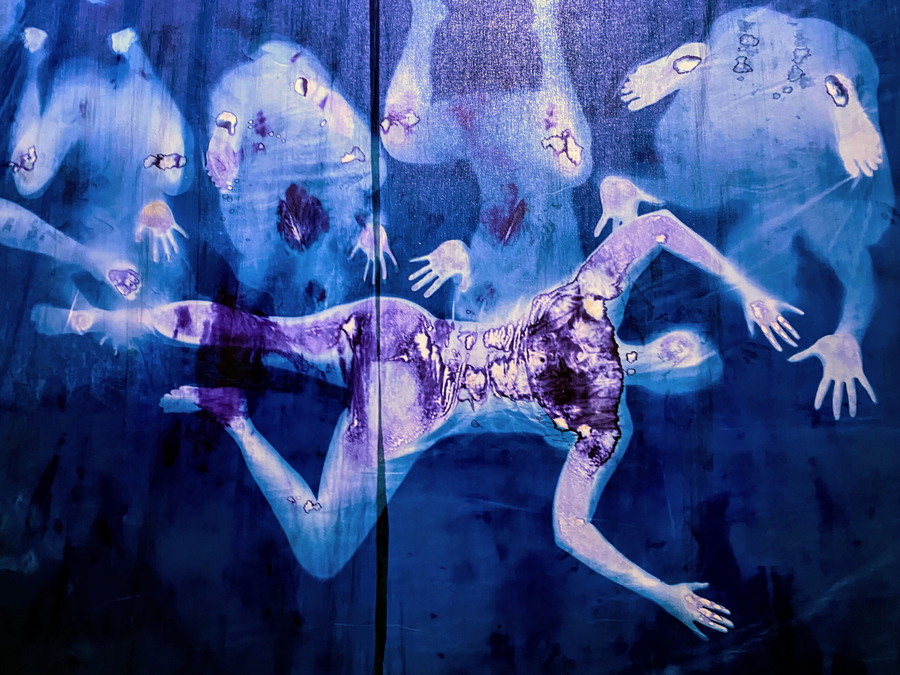
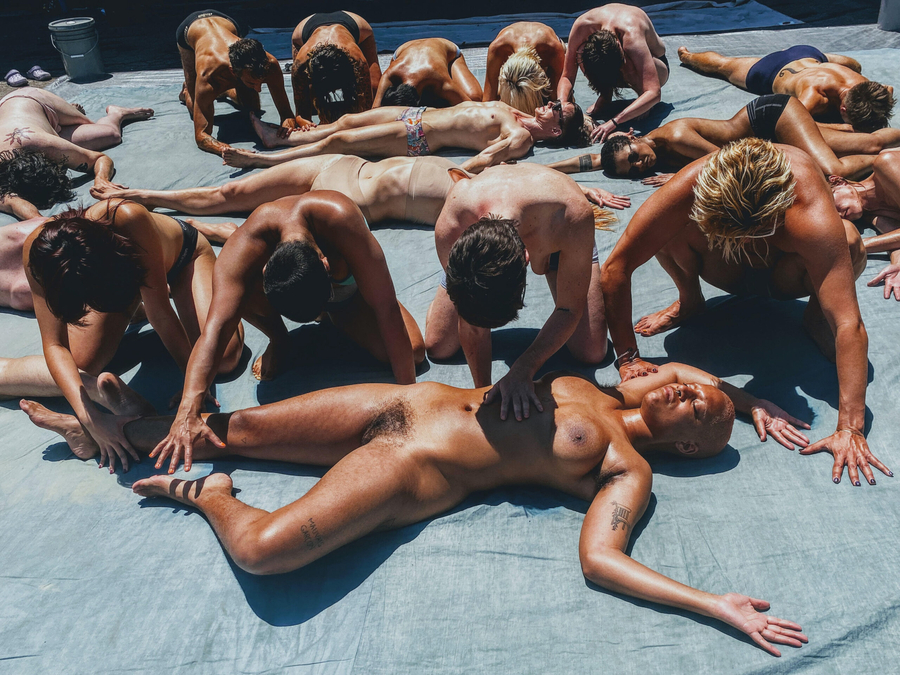
Los Angeles and New York-based multidisciplinary artist Cassils employs performance as a form of social sculpture, contemplating histories of 2SLGBTQI+ violence, representation, struggle, survival, empowerment, and modes of care. They frequently use photography as a tool to both witness and index the live durational performances that often push the artist’s body to its limits. In their series Human Measure (2022), Cassils intersects contemporary dance with the history of photography through the live development of large-scale cyanotypes, created with light and the performing bodies of non-binary and trans collaborators. In Works in Practice, this cyanotype is contextualized with a series of photographs documenting the work’s choreography and cyanotype exposure during L.A. Pride in 2021—”a moment of intimacy, endurance and touch” after months of isolation during the COVID-19 pandemic.

Toronto-based artist Suzanne Nacha creates idiosyncratic worlds through painting, sculpture, and animation that examine our relationship to geologic and industrial landscapes. Nacha draws on her geological background, creating maps of the earth’s continents and structure to consider human experience’s connection to the physical earth through humour, pathos, and anthropomorphism. Nacha poses and photographs coloured clay sculptures in painted environments to construct elaborate scenes of complex imagined landscapes that are the basis for her painted works. Her photographs translate the varied contours, forms and lines of the three-dimensional into complex two-dimensional landscapes that challenge our perception of form and scale.

Sackville and Toronto-based artist Roula Partheniou employs the replication of inanimate objects as a tool to deconstruct the experience of perception and the vernacular of common objects in contemporary life. Primarily working in sculpture, Partheniou reinterprets the motifs of the still life—an exercise in detaching a humble object from its normal setting in order to translate and describe its essence. In her practice, Partheniou turns the same critical lens to her environment, capturing similarly enigmatic objects in their natural habitat. In Works in Practice, photographs collected from these daily musings are contrasted with photographs of her sculptures, resulting in a series of images containing visual puns, revelling in material play.

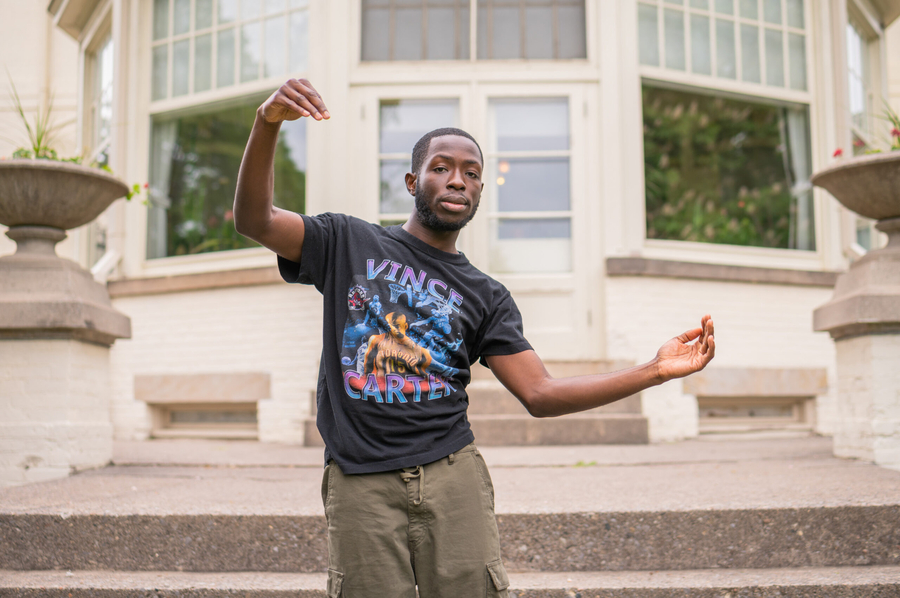
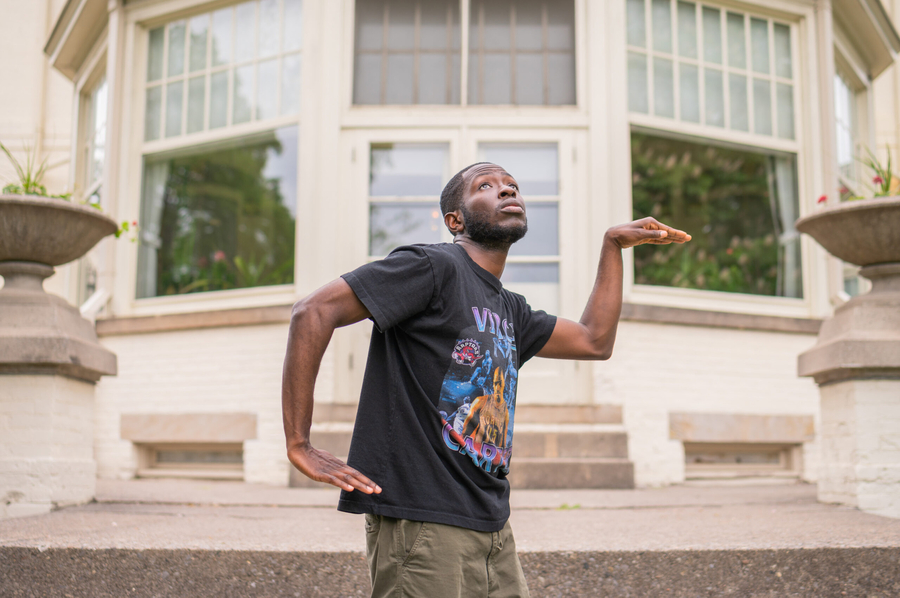
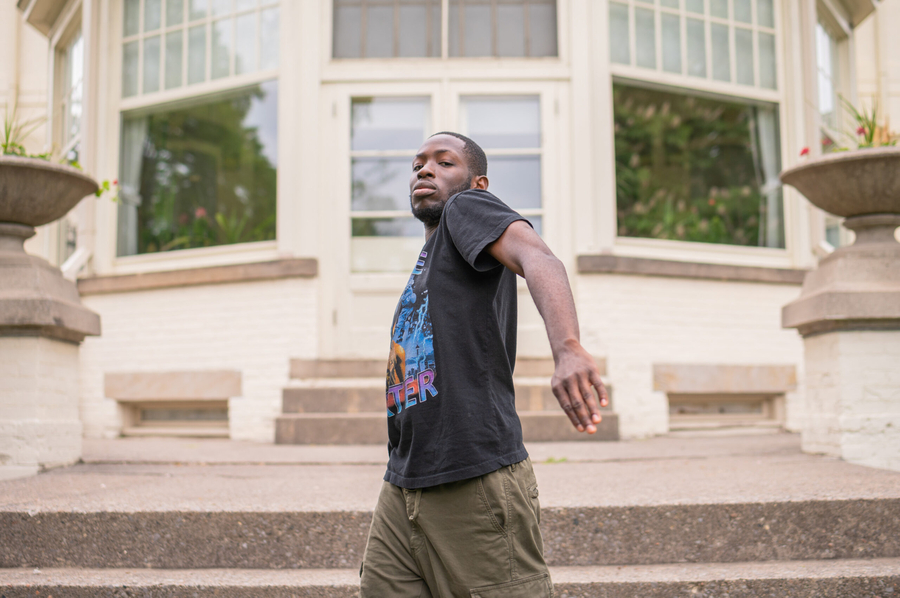
Toronto-based artist Gordon Shadrach’s practice uses the tradition of portraiture painting and the semiotics of clothing to disrupt historic and contemporary depictions of Black people in art and culture. For his project Dis/Mantle (2022–23), Shadrach employs an afrofuturist narrative to re-imagine the early 20th century mansion Spadina House, animating it with his portraits of leading contemporary cultural figures alongside multidisciplinary works by other artists of the Afro-Caribbean diaspora. In Works in Practice, photographs taken as reference for Shadrach’s paintings capture his portrait subjects at play and leisure in the lush gardens of Spadina House. These are contrasted with portrait photographs from his series Trade (2019), in which Shadrach uses the dress of contemporary basketball jerseys and the historic uniform of Black Loyalists to confront systems of power that utilize Black bodies for capital gain.

Although none of the four artists identify primarily as photographers, photography plays an essential part in each of their creative practices. For some, photography has become part of a daily practice, analogous to the act of drawing. Revealed in Works in Practice are the artists’ sources of inspiration from the world around them, their relationship with their collaborators, and their processes for world and language-building.
Curated by Adrien Sun Hall
Presented by United Contemporary
Cassils is a transgender artist who makes their own body the material and protagonist of their performances. Cassils’s art contemplates the history(s) of LGBTQI+ violence, representation, struggle and survival. For Cassils, performance is a form of social sculpture: Drawing from the idea that bodies are formed in relation to forces of power and social expectations, Cassils’s work investigates historical contexts to examine the present moment. Cassils has had recent solo exhibitions at HOME Manchester, Station Museum of Contemporary Art, Perth Institute for Contemporary Arts, Ronald Feldman Fine Arts, NYC; Institute for Contemporary Art, AU; Philadelphia Academy of Fine Arts; Bemis Center, Omaha; MU Eindhoven, Netherlands. They are the recipient of the National Creation Fund, a 2020 Fleck Residency from the Banff Center for the Arts, a Princeton Lewis Artist Fellowship finalist, a Villa Bellagio Rockefeller Foundation Fellowship, a United States Artist Fellowship, a Guggenheim Fellowship and a Creative Capital Award. Cassils is an Associate Professor in Sculpture and Integrated Practices at PRATT Institute.
Suzanne Nacha works in painting, sculpture and animation. Creating idiosyncratic worlds as sites for narrative exploration, she balances humour, pathos and anthropomorphic tendencies to examine our relationship to geologic and industrial landscape. Informed by her experiences mapping the far-reaches of Canada, creating geologic maps that span the earth’s continents and the study of structural geology; Nacha’s imagery draws playfully from both geology and the visual arts. Having received her MFA from York University in 2003, she has exhibited in Canada, the United States and Europe. Her work is represented in public and private collections, including the Department of Foreign Affairs and International Trade, the National Bank of Canada, and the Robert McLaughlin Gallery.
Roula Partheniou’s sculptural practice centers on an exploration of the replica, calling into question the language of everyday objects and the ways we read and decipher our environment. Employing strategies such as optical illusion, associative play, visual similes, material puns, colour cues and the double-take, the works draw an alternate logic from commonplace materials. Experiential in nature, her objects and installations re-articulate the act of perceiving. Partheniou has exhibited throughout Canada and internationally, with recent exhibitions at Marta (Los Angeles); Essex Flowers (NYC); Arroniz Contemporary (Mexico City); Manif d’Art Biennial (Quebec); BMO Project Room (Toronto); Fundacion Calosa (Guanajuanto). Her work is held in numerous private, public, corporate and institutional collections and is represented by MKG127, Toronto.
Gordon Shadrach has had a lifelong fascination with the semiotics of clothing and its impact on culture. In particular, his interest lies in the intersection and codification of race and fashion. These codes impact the way we navigate through spaces and influence how people associate with one another. Shadrach’s portraits of Black men utilize fashion—contemporary or historical dress—in order to create narratives which pull viewers in to explore the biases embedded in North American culture. Shadrach’s paintings are often finished in found antique and vintage frames. The frames’ patina and wear lend historic weight and insert the portraits into a period when Black people were rarely depicted in Western portraiture. Shadrach seeks to disrupt the colonial constrictions of portraiture by inviting viewers to reflect upon the depiction of Black people in art and culture. Shadrach’s work has been exhibited in Canada and the US, and appears in notable collections such as the Art Gallery or Hamilton, The Wedge Collection, Agnes Etherington Gallery, and The Wright Collection. His work is currently installed at the Spadina House Museum for Dis/Mantle, as part of the City of Toronto’s Awakenings program.